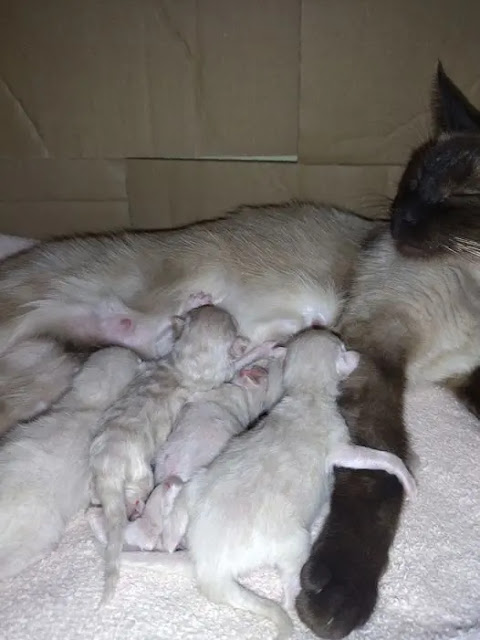Sterilization in cats can be performed from the age of 6 months. What are the indications and benefits of this procedure and how does it work? Discover the answers to your questions through this short guide or contact one of our online veterinarians.
The benefits of spaying a cat
A cat in heat vocalizes a lot and changes her behavior. She asks for affection, seeks to go outside and may present urinary malpractice. The heat lasts several weeks. The sterilization of domestic cats allows to avoid these annoying behaviors of heat, avoid unwanted pregnancies and allows to limit the risk of appearance of uterine diseases, uterine or mammary cancers. Indeed, spayed cats have much less risk of developing uterine infections and mammary cancer. In addition, due to a large population of unneutered "stray" cats, a cat in heat that has free access to the outdoors will quickly become pregnant. This contributes to the maintenance of a stray cat population, often carrying viral diseases such as FIV (or cat AIDS) and leukaemia (FelV). Therefore, spaying and neutering of female cats with access to the outdoors are essential.
The disadvantages of spaying a cat
A spayed cat tends to gain weight more easily if her food is not properly distributed or if her lifestyle is very sedentary. It is therefore recommended to weigh your pet regularly and to feed it with adapted food (specific food for sterilized cats).
What do you think of the contraceptive pill for cats?
Just as in women, there is a contraceptive pill that can be given to a domestic cat to stop her from coming into the heat. This medication causes non-definitive sterilization but is strongly advised against by veterinarians. Indeed, it is frequent to diagnose mammary cancers in cats having received the contraceptive pill.
How is spaying done in cats?
Surgical sterilization (called ovariectomy or ovariohysterectomy in cats) is performed under general anaesthesia. For this, the animal must be presented fasting in a veterinary office or clinic. The fasting consists of the withdrawal of access to food and begins, in general, the evening before the surgery. Water can be left available to the animal until the morning of the operation. Fasting before any general anaesthesia will limit the risk of vomiting during the procedure.
- The veterinarian will perform a pre-anaesthetic clinical examination to detect possible contraindications to general anaesthesia. Then, if the clinical examination is normal, painkillers and anaesthetics will be injected into the animal, either intramuscularly or intravenously.
- Once anaesthetized, the animal is then clipped in front of the area to be operated on (belly or flank in cats). Then, the surgical area is disinfected.
- Ovariectomy in cats consists of the removal of the ovaries. An ovariohysterectomy can be proposed by the veterinarian on old cats or having already had several litters. This last intervention consists of the removal of the ovaries and the uterus. All of these surgical procedures are performed in an operating room, which is a room dedicated to surgery.
- Antibiotic and anti-inflammatory injections are usually given in parallel with the surgeries to limit the risk of post-operative infection and to limit pain upon awakening.
- The anaesthetic awakening will then be done gradually, during the hours following the operation.
- The animal is returned to its owners on the evening of the operation.
- In cats, the stitches are removed about 15 days after the operation.


Post a Comment